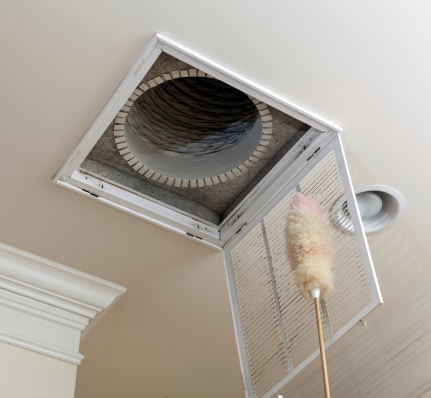Indoor air quality in North American homes may not be as safe as we perceive it to be. According to research, about 96% of homes had one air quality issue at the minimum. This finding is supported by the EPA (Environmental Protection Agency), which estimates that indoor air in most homes can be 5 times dirtier than air outside. Majority of homes, for example, had high levels of common pollutants such as dust, pollen, harmful gases, chemicals and viruses.
Are You Safe Indoors?
As shown by figures that have resulted from surveys and research, many homes suffer from indoor air quality that is below par. Common pollutants such as dust, along with biological pollutants such as bacteria, molds, animal dander and dust mites often contribute to health issues that are serious enough to cause sickness and certain diseases, particularly among sensitive individuals such as children and the elderly.
In homes where there is at least one smoker, the threat to health also increases. The American Lung Association states that tobacco smoke (frequently inhaled as secondhand smoke) contains 4,000 different chemicals, 200 of which are known poisons, including carbon monoxide, formaldehyde and carcinogens.
Improving Indoor Air Quality
Increasing the quality of indoor air is helpful in preventing conditions that are detrimental to health. Some of the most important steps to take include:
Regulating Humidity
High humidity encourages the growth of mold and mildew. In areas such as the kitchen, basement and bathroom where dampness is common, air circulation must be encouraged to keep the surfaces dry. It is also a good idea to clean these areas frequently. In enclosed spaces such as basements, using a dehumidifier is a good option.
Vacuuming Regularly
Chemicals can accumulate in dust for many years. Use a HEPA filter vacuum at least once a week to remove microparticles. Run the vacuum several times over frequently used areas and give extra attention to corners, edges and folds in fabric and upholstery. Change or wash dust bags or filters regularly.
Using Natural or Organic Products
Most commercially available products used for cleaning, gardening, painting and personal care contain chemicals that can potentially cause harm. Switching to natural or organic products or creating your own is an excellent step to maintaining indoor air quality. If use of chemical-laden products cannot be avoided, make sure to follow manufacturer’s instructions carefully and to store or dispose of the product as recommended.
Air conditioning and heating systems also contribute to improving indoor air quality. Start breathing cleaner air in your home! Call our experts today and schedule you Home Air Quality Evaluation!









